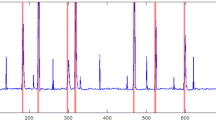Abstract
Analysis of traffic dynamics in large urban transportation networks is a complicated procedure, yet critical for many areas of transportation research and contemporary intelligent transportation systems. The degree of complexity is increasing, considering the existence of unexpected events such as natural or manmade disasters. The study addresses the needs of detection and description of abnormal traffic patterns formed due to the presence of aforementioned disruptions. In order to take into account complex spatiotemporal structure of traffic dynamics and preserve multi-mode correlations, tensor-based traffic data representation is put forward. Tensor robust principal component analysis is applied for the purpose of discovering distinctive normal and abnormal traffic patterns. For validation purposes, continuum modeling approach is employed to emulate traffic dynamics, with consideration of the effect of disruptions. The results suggested applicability of proposed approach in order to discover abnormal patterns in large urban networks.







Similar content being viewed by others
Explore related subjects
Discover the latest articles and news from researchers in related subjects, suggested using machine learning.References
Rempe, F., Huber, G., Bogenberger, K.: Spatio-temporal congestion patterns in urban traffic networks. Transportation Research Procedia. 15, 513–524 (2016)
Li, L., Li, Y., Li, Z.: Efficient missing data imputing for traffic flow by considering temporal and spatial dependence. Transportation Research Part C: Emerging Technologies. 34, 108–120 (2013)
Goulart, J.H.M., de Kibangou, A.Y., Favier, G.: Traffic data imputation via tensor completion based on soft thresholding of Tucker core. In: Transportation Research Part C: Emerging Technologies. 85, 348–362 (2017)
Ran, B., Tan, H., Wu, Y., Jin, P.J.: Tensor based missing traffic data completion with spatial-temporal correlation. Physica A: Statistical Mechanics and its Applications. 446, 54–63 (2016)
Chen, X., He, Z., Wang, J.: Spatial-temporal traffic speed patterns discovery and incomplete data recovery via SVD-combined tensor decomposition. Transportation Research Part C: Emerging Technologies. 86, 59–77 (2018)
Han, Y., Moutarde, F.: Analysis of large-scale traffic dynamics in an urban transportation network using non-negative tensor factorization. Int. J. Intell. Transp. Syst. Res. 14(1), 36–49 (2016)
Chi, E.C., Kolda, T.G.: “Making tensor factorizations robust to non-Gaussian noise”. In: tech. Rep. No. SAND2011-1877. Sandia National Laboratories. (2011)
Du, J., Wong, S.C., Shu, C.W., Xiong, T., Zhang, M., Choi, K.: Revisiting Jiang’s dynamic continuum model for urban cities. Transp. Res. B Methodol. 56, 96–119 (2013)
Jiang, Y., Xiong, T., Wong, S. C., Shu, C. W., Zhang, M., Zhang, P., Lam., W.H.K., "A reactive dynamic continuum user equilibrium model for bi-directional pedestrian flows". In: Acta Math. Sci., Vol. 29(6), pp. 1541–1555 (2009)
Long, J., Szeto, W.Y., Du, J., Wong, R.C.P.: A dynamic taxi traffic assignment model: a two-level continuum transportation system approach. In: Transportation Research Part B: Methodological. Vol. 100, 222–254 (2017)
Kolda, T.G., Bader, B.W.: Tensor decompositions and applications. SIAM Rev. 51(3), 455–500 (2009)
Edie L., “Discussion of traffic stream measurements and definitions”. In: Almond, J (Ed.), Proceedings of the 2nd International Symposium on the Theory of Traffic Flow, pp. 139–154
Xue, N., Papamakarios, G., Bahri, M., Panagakis, Y., Zafeiriou, S.: Robust low-rank tensor modelling using Tucker and CP decomposition. In: 25th European Signal Processing Conference (EUSIPCO). 1185–1189 (2017)
Goldfarb, D., Qin, Z.: Robust low-rank tensor recovery: models and algorithms. SIAM Journal on Matrix Analysis and Applications. 35(1), 225–253 (2014)
Sossoe, K.S., Lebacque, J.P., Mokrani, A., Haj-Salem, H.: Traffic flow within a two-dimensional continuum anisotropic network. Transportation Research Procedia. 10, 217–225 (2015)
Chopp, D.L.: Some improvements of the fast marching method. In: SIAM Journal on Scientific Computing, 23(1), pp. 230–244 (2002)
Signoretto, M., De Lathauwer, L., Suykens, J. A. K. “Nuclear Norms for Tensors and Their Use for Convex Multilinear Estimation”. Technical report, ESAT-SISTA, K. U. Leuven, Belgium. (2010)
Author information
Authors and Affiliations
Corresponding author
Additional information
Publisher’s Note
Springer Nature remains neutral with regard to jurisdictional claims in published maps and institutional affiliations.
Rights and permissions
About this article
Cite this article
Lykov, S., Asakura, Y. Anomalous Traffic Pattern Detection in Large Urban Areas: Tensor-Based Approach with Continuum Modeling of Traffic Flow. Int. J. ITS Res. 18, 13–21 (2020). https://doi.org/10.1007/s13177-018-0167-5
Received:
Revised:
Accepted:
Published:
Issue Date:
DOI: https://doi.org/10.1007/s13177-018-0167-5




